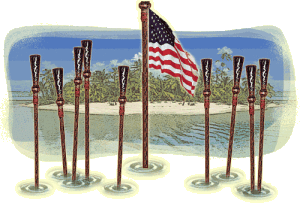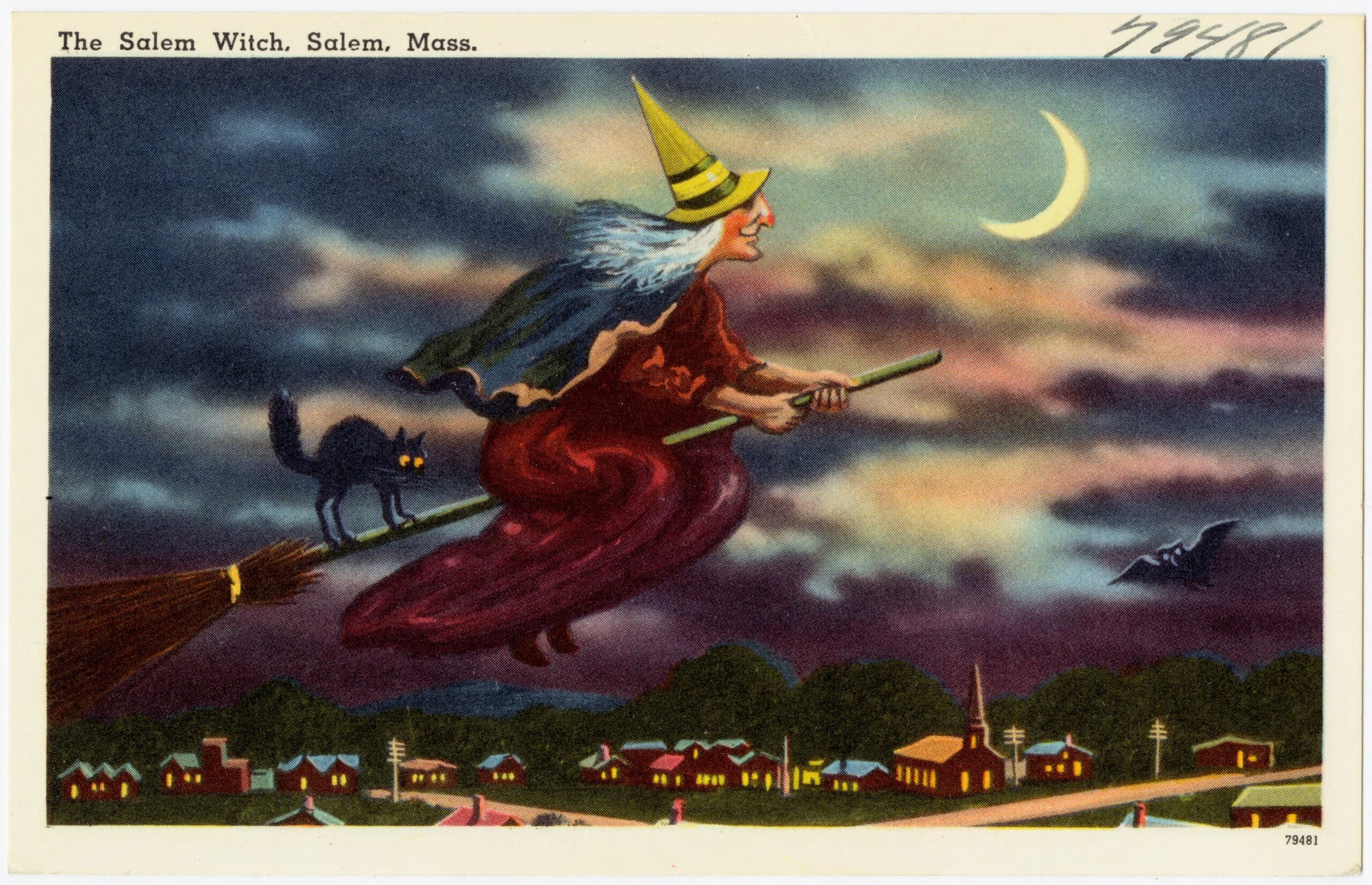The imperialist imagination from filibustering to reality TV
The Empire is back, and no, I’m not referring to Star Wars: Revenge of the Sith. Nor am I talking about the imperialist-sequel America of George W. Bush, the War in Iraq, and preemptive strikes. Not directly, anyhow. The latest iteration of CBS’s Survivor, TV’s longest-running reality show series, is to be set, yet again, in the tropics. “Survivor Guatemala: the Mayan Empire” began filming in June. According to CBS News (always happy to plug its lucrative reality-TV franchise), officials in Guatemala are hoping that this latest Survivor will spur American tourists to visit the country’s remarkable Mayan ruins.
That may well happen, and good luck to Guatemala and its infomercial. But as edifying as it might be for large numbers of Americans to steep themselves in someone else’s empire, Survivor is probably not the best vehicle for encouraging educated foreign travel. Previous Survivors have been set in Palau, Vanuatu, Panama, the Marquesas, the Amazon, and the Australian outback. But they looked pretty much the same: plenty of bathing suits, and bugs, attempts to spear fish, and beach-front shack construction. More importantly, contestants did the same things in these diverse settings. They formed and broke alliances, romanced one another, struggled with the heat, and competed in physical and mental challenges that rewarded individual strength, willpower, and agility—all in the pursuit of a million-dollar prize for one driven winner. The longevity of Survivor can perhaps be attributed to the fact that for the purposes of the competition, these tropical and quasi-tropical settings (even, oddly enough, the Australian outback) are effectively interchangeable. Contestants may occasionally interact with photogenic indigenous peoples in highly scripted and heartwarming ways or bear witness to the natural wonders around them (by swimming with stingless jellyfish, for instance), but none of this faux exoticism interferes with the business at hand, which is to endow the strongest, toughest, and most Machiavellian American with a big pile of U.S. greenbacks. In Survivor, it’s “American values” that are rewarded and endlessly strategic individualism that prevails. Sorry, Guatemala, but Survivor is ultimately about one empire only, and that one is America’s.
Nor is Survivor unusual in co-opting the tropics in the service of American enterprise. Temptation Island, The Real Gilligan’s Island, and portions of The Great Race—in all of these reality shows the tropics function as fantasy spaces, where otherwise undistinguished individuals can single-mindedly pursue riches and usually sex as well. Where is this new Gilligan’s Island? Does it matter? Like the first Survivor, originally set on an unidentified beach on an unidentified island, the TV tropics are fiercely anonymous and never actual countries whose governments, cultures, and societies have significant bearing on the behavior of the American interlopers. Of course particularity of place is not a noted strongpoint of reality TV. Even shows that are explicitly about their locations tend toward the universal. (Is that glossy nightclub on MTV’s The Real World in San Diego or Paris? Is that Jacuzzi in Austin or London?) Or they revel in cliché. When strapping young American men are exported to England on VH1’s Kept, for instance, they compete in polo matches, attend formal parties with royalty, and prepare spotted dick (a British dessert) in their attempts to become the kept man of ex-supermodel and ex-wife of Mick Jagger, Texas-born Jerry Hall.
But the TV tropics are something special, not only for their anonymity and interchangeability, but also because of their unequalled appeal as the setting for these shows. Why are the tropics so appealing to reality-TV producers and viewers? True, bathing suits bring in better ratings than parkas, but Jerry’s “boys” manage to find opportunities to shine, and show skin, in temperate Old England, while the aspiring male strippers/models of VH1’s Strip-Search and the Oxygen Network’s Mr. Romance rarely wear shirts or venture out-of-doors. The promise of the tropics is not so much the bikini (although bikinis are clearly important) as the certain victory of American values abroad and the ability of Americans to survive and become rich by dint of will and sexiness in a “primitive” environment.
Survivor was a sequel from the start. The appeal of the tropics as idealized location for the triumph of American enterprise and individualism is nothing new and, in fact, is a reoccurring theme in periods of American imperial expansionism. The tropics were similarly visualized in the two decades before the Civil War, when the conviction that America had a God-given Manifest Destiny to overspread the continent shaped presidential elections and helped justify a bloody war against Mexico in 1846. Thirteen-thousand Americans and twenty-thousand Mexicans died in that war as America’s popular literature extolled the opportunities for American men in the “fertile tropics” of Mexico. As Americans debated whether or not to annex all of Mexico as spoils of war in early 1848, Sam Houston, founding father of the Republic of Texas, assured a large crowd of New Yorkers gathered at a public meeting that Mexico was meant to be settled by Americans. He recommended that they “take a trip of exploration” to Mexico, find some “beautiful senoritas” and “if you should choose to annex them, no doubt the result of this annexation will be a most powerful and delightful evidence of civilization.” Equating personal and national annexation, Houston promised that what was good for the country would also be good for the individual and suggested that Mexican men were too unworthy as opponents to even factor into the equation.
Although the so-called all-Mexico movement failed, and midcentury expansionism ended with Mexico transferring half of her territory to the United States, expansionists continued to gaze longingly to the south. Tropical travel narratives, in both book and article form, proliferated in the 1840s and 1850s and offered a vision of the tropical portions of the Western Hemisphere, from the Caribbean to Hawaii, as ripe for American takeover. Less concerned with the civilizations of the south, than with spreading American civilization to the south, travel writers repeatedly pointed out that “the enterprise of the states” was all that was needed to turn tropical land into “a paradise” and contrasted the “slothful” and “lazy” local men with the energetic and hard-working American settlers who were bound to displace them. Appealing both to expansionists convinced that America’s Manifest Destiny was yet to be fulfilled and to displaced workingmen searching for opportunity, these narratives of Americans in the tropics promised, as Survivor and its kin do today, that yesterday’s failure in the United States could be tomorrow’s success in the tropics.
The tropics thus offered the perfect second chance to the American man willing to make the effort. The leading magazines of the day, including Harper’s, Putnam’s, and the Atlantic Monthly all ran travelogues that situated tropical lands firmly within the reach of America’s Manifest Destiny. These exotic locales, whether in Central America, the Caribbean, or the Pacific, were imbued with the promise of both romantic and economic success, predicated on the fact that any American man, even a failure, had the strength, intelligence, and will to succeed among the lesser men of the tropics. Within this genre, the equivalent to Survivor’s million-dollar paycheck was the indigo, sugar, or banana plantation, or possibly a yet-undiscovered gold mine, complemented by a beautiful local woman. Unlike in Survivor, however, the American’s competition for this prize was the supposedly lazy and racially inferior native man, and the conclusion, a foregone one. As one booster of the annexation of Mexico wrote in 1857, “it is now for a new race, a race possessed of iron will, to turn” these lands “to account.”
Filibusters, mercenaries who attacked countries in the Caribbean and Central America with disturbing regularity in the 1840s and 1850s in hopes of gaining new U.S. territory, also visualized the tropics as sites of easily won victory for American men. The chorus to a song sung by Cuban filibusters declared “O Cuba is the land for me,/I’m bound to make some money there! And set the Cubans free—.” (One filibuster, Narciso López, made three attempts on Cuba with American recruits between 1849 and 1851.) An 1856 poem in the New York Picayune celebrated the brief victory of filibuster William Walker—who ruled Nicaragua for less than a year before fleeing to the United States in the face of a stronger Central American army—by declaring that Nicaragua was a place:
“Where all things grow without the taming of a plough,
Where men grow fat by feasting, sans the sweat of brow.
Offers its steaming wealth to those who like to seek it,
And own their masters, if they’ll stick by and keep it.”
Even the forty-niners traveling through Nicaragua and Panama in the great race to the gold fields of California imagined the possibilities for “men of enterprise” of “our own race” in lands where so much grew “in the greatest luxuriance, and without apparent cultivation.” One gold-rush travel guide declared that Central America, and not California, was in fact “the real El Dorado” and advocated the immediate annexation of the Central American isthmus.
What the tropics so seductively promised was success to Americans simply by virtue of their being American, reassuring them of the universality of their values. The tropics were appealing not only because they were inhabited by scantily clad women but because the supposed racial superiority of the American Anglo-Saxon and his culture seemed to insure success to the individual who, borrowing a slogan from Survivor, was willing to “outwit, outplay, and outlast” his competition. From the antebellum travel narrative through reality TV, some things just haven’t changed. Being an empire means never having to say you are sorry for turning the rest of the world into backstory for your own national drama.
Further Reading:
All quotes are taken from Amy S. Greenberg, Manifest Manhood and the Antebellum Empire (New York, 2005). On the American image of Mexico and the U.S.-Mexico War, see Robert Johannsen, To the Halls of the Montezumas: The Mexican War in the American Imagination (New York, 1985). On cultural production after the war see Shelly Streeby, American Sensations: Class, Empire, and the Production of Popular Culture (Berkeley, 2002). On images of foreign lands in antebellum America, see Bruce Albert Harvey, American Geographics: U.S. National Narratives and the Representation of the Non-European World, 1830-1865 (Stanford, 2001). The best study of filibustering is Robert E. May, Manifest Destiny’s Underworld: Filibustering in Antebellum America (Chapel Hill, 2002). On imperialism and American culture in the later nineteenth and twentieth centuries, see Gilbert M. Joseph, Catherine C. LeGrand, Ricardo D. Salvatore, eds., Close Encounters of Empire: Writing the Cultural History of U.S.-Latin American Relations (Durham, 1998).
Outstanding examples of the antebellum expansionist travel narrative include: Peter F. Stout, Nicaragua: Past, Present and Future; a Description of Its Inhabitants, Customs, Mines, Minerals. Early History, Modern Filibusterism, Proposed Inter-Oceanic Canal and Manifest Destiny (Philadelphia, 1859); William V. Wells, Explorations and Adventures in Honduras, excerpted in “Adventures in the Gold Fields of Central America,” Harper’s New Monthly Magazine 12 (February 1856): 315-36; and Marvin Wheat (as “Cincinnatus”), Travels on the Western Slope of the Mexican Cordillera in the Form of Fifty-One Letters (San Francisco, 1857).
This article originally appeared in issue 6.1 (October, 2005).
Amy S. Greenberg is associate professor of history and women’s studies at the Pennsylvania State University and acting director of the Richards Civil War Era Center. She is author of Manifest Manhood and the Antebellum American Empire (New York, 2005) and Cause for Alarm: the Volunteer Fire Department in the Nineteenth-Century City (Princeton, 1998). She is currently conducting research for a cultural history of the U.S.-Mexico War.




















